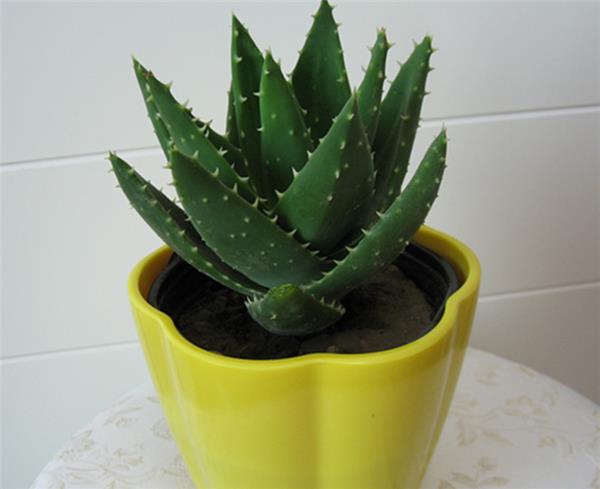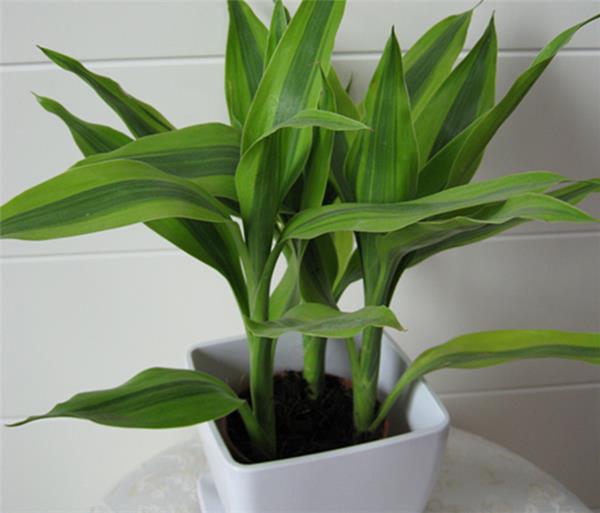What are the flowers suitable for the family?
Nowadays, it is very common to put potted plants at home, so what are the flowers suitable for the family?

1. Dishui Guanyin: it has the effect of removing dust from the air.
It has the effect of removing dust from the air. But the white juice in the stem of dripping Guanyin is poisonous, and the dripping water is also poisonous. accidentally touching or eating its juice will cause discomfort in the pharynx and mouth and burning pain in the stomach. Special attention should be paid to preventing young children from eating by mistake. But Dishui Guanyin is not a carcinogenic plant.
2. Gentleman orchid: release oxygen. A freshener that absorbs smoke
An adult magnolia can absorb 1 liter of air and release 80% oxygen in a day and night, and photosynthesis can occur in extremely weak light. It doesn't emit carbon dioxide at night. In a room of more than ten square meters, two or three pots of magnolia can absorb the indoor smoke. Especially in the cold winter in the north, because the doors and windows are closed and the indoor air is not ventilated, the gentleman orchid will play a good role in regulating the air. Keep the indoor air fresh.
3. Rubber tree: a generalist who eliminates harmful substances
Hevea brasiliensis is a generalist in eliminating harmful plants. It is resistant to harmful gases such as carbon monoxide, carbon dioxide and hydrogen fluoride in the air. Rubber tree can also eliminate the pollution of respirable particles and effectively detain indoor dust.
4. Asparagus: a protective umbrella to eliminate bacteria and viruses
Asparagus contains plant aroma with antibacterial ingredients, which can remove bacteria and viruses from the air, and has health care function. Therefore, the smell released by asparagus has the power of sterilization and benefit. In addition, asparagus has high medicinal value. Dig up its fleshy roots and wash away the dust and dirt. Dry for spare or fresh and ready to use. The leafy branches are picked whenever they are used. All have the effect of relieving cough, moistening the lungs, cooling blood and detoxifying.

5. Silver Queen: unique Air purification
It is famous for its unique air purification ability: the higher the concentration of pollutants in the air, the more it can exert its purification ability! Therefore, it is very suitable for dark rooms with poor ventilation.
6. Dryopteris: the most effective biological "purifier"
It absorbs about 20 micrograms of formaldehyde per hour, so it is considered to be the most effective biological "purifier". People who deal with paint or paint all day long, or people who like to smoke around them, should put at least one fern in the workplace. In addition, it can also inhibit the release of xylene and toluene from computer monitors and printers.
7. Hanging orchid: it can absorb 95% carbon monoxide and 85% formaldehyde in the air.
The orchid can carry out photosynthesis in weak light, and the orchid can absorb poisonous and harmful gases in the air. A pot of orchid is equivalent to an air purifier in a room of 8 square meters. Generally raise 1-2 pots of orchids in the room, which can release oxygen in 24 hours and absorb formaldehyde, styrene, carbon monoxide, carbon dioxide and other carcinogens in the air. The orchid has a strong ability to absorb some harmful substances, such as 95% of carbon monoxide and 85% of formaldehyde in the air. Cymbidium can also decompose benzene and absorb nicotine and other relatively stable harmful substances in cigarette smoke. Therefore, the hanging orchid is also called the green purifier of indoor air.
8. Aloe: a pot of aloe is equivalent to nine biological air cleaners
Potted aloe has a reputation as an expert in air purification. A pot of aloe equals nine biological air cleaners, which can absorb formaldehyde, carbon dioxide and sulfur dioxide. Harmful substances such as carbon monoxide. Especially for formaldehyde absorption is very strong. Under the condition of 4 hours of light, a pot of aloe can eliminate 90% formaldehyde in one square meter of air, kill harmful microorganisms in the air, and absorb dust, which plays an important role in purifying the indoor environment. When the indoor harmful air is too high, the leaves of aloe will appear spots. This is the signal for help. Just add a few more pots of aloe indoors. Indoor air quality will return to normal.

9. Brown bamboo: eliminating heavy metal pollution and carbon dioxide
The function of brown bamboo is similar to that of tortoise back bamboo. Brown bamboo, which also belongs to large-leaf ornamental plants, can absorb more than 80% of the harmful gases and purify the air. At the same time, brown bamboo can also eliminate heavy metal pollution and has a certain resistance to sulfur dioxide pollution. Of course, as foliage plants with large leaves, their greatest feature is that they have the function of digesting carbon dioxide and producing oxygen that ordinary plants cannot do.
10. Tortoise back bamboo: absorb carbon dioxide at night to improve air quality
The function of turtle-backed bamboo to purify the air is slightly weaker, it is not like hanging orchids. Aloe is a versatile person who purifies the air. However, the effect of tortoise back bamboo on removing formaldehyde in the air is more obvious. In addition, tortoise-backed bamboo has the effect of absorbing carbon dioxide at night. It is of great help to improve indoor air quality and increase oxygen content. In addition, the tortoise back bamboo generally has a larger plant and an elegant shape. The leaves are sparse and beautiful. So it is a very ideal indoor plant. The fruit of the tortoise back bamboo can cook when it is ripe. It smells like pineapple or banana.
11. Ivy: champion of absorbing formaldehyde
Ivy is currently the most effective indoor plant that absorbs formaldehyde. Ivy leaves per square meter can absorb 1.48 mg of formaldehyde. The total leaf area of 2 pots of adult ivy is about 0.78 square meters. At the same time, ivy can also absorb benzene, a toxic and harmful substance, and can absorb 90% of indoor benzene under 24-hour light conditions. According to speculation, 10 square meters of room, only need to put 2-3 pots of ivy can play a role in purifying the air. It can also absorb particulate dust.
12. Rich bamboo: a healthy plant suitable for the bedroom
Rich bamboo can help rooms that do not often open windows to improve air quality, with disinfection function, especially in the bedroom, rich bamboo can effectively absorb exhaust gas, so that the private environment of the bedroom can be improved.

13. Fortune Tree: fighting against exhaust gases from Tobacco Combustion
The rich tree is evergreen all the year round and can absorb toxic gases and release oxygen through photosynthesis. It can effectively absorb the pollution of carbon monoxide and carbon dioxide, and play a certain role in resisting the exhaust gas produced by tobacco combustion.
14. Cactus: the best plant to reduce electromagnetic radiation
Cactus has a strong effect of anti-inflammation and sterilization. In dealing with pollution, cactus is the best plant to reduce electromagnetic radiation. In addition, the cactus absorbs carbon dioxide and releases oxygen at night. There is a cactus in the room at night, which can replenish oxygen and help sleep.
It helps a lot to increase the oxygen content. In addition, the tortoise back bamboo generally has a larger plant and an elegant shape. The leaves are sparse and beautiful. So it is a very ideal indoor plant. The fruit of the tortoise back bamboo can cook when it is ripe. It smells like pineapple or banana.
11. Ivy: champion of absorbing formaldehyde
Ivy is currently the most effective indoor plant that absorbs formaldehyde. Ivy leaves per square meter can absorb 1.48 mg of formaldehyde. The total leaf area of 2 pots of adult ivy is about 0.78 square meters. At the same time, ivy can also absorb benzene, a toxic and harmful substance, and can absorb 90% of indoor benzene under 24-hour light conditions. According to speculation, 10 square meters of room, only need to put 2-3 pots of ivy can play a role in purifying the air. It can also absorb particulate dust.
12. Rich bamboo: a healthy plant suitable for the bedroom
Rich bamboo can help rooms that do not often open windows to improve air quality, with disinfection function, especially in the bedroom, rich bamboo can effectively absorb exhaust gas, so that the private environment of the bedroom can be improved.

13. Fortune Tree: fighting against exhaust gases from Tobacco Combustion
The rich tree is evergreen all the year round and can absorb toxic gases and release oxygen through photosynthesis. It can effectively absorb the pollution of carbon monoxide and carbon dioxide, and play a certain role in resisting the exhaust gas produced by tobacco combustion.
14. Cactus: the best plant to reduce electromagnetic radiation
Cactus has a strong effect of anti-inflammation and sterilization. In dealing with pollution, cactus is the best plant to reduce electromagnetic radiation. In addition, the cactus absorbs carbon dioxide and releases oxygen at night. There is a cactus in the room at night, which can replenish oxygen and help sleep.
Related
- Wuhan Hospital Iron Tree Blooming Result Was Instantly Frightened by the Gardener Master
- Which variety of camellia is the most fragrant and best? Which one do you like best?
- What is the small blue coat, the breeding methods and matters needing attention of the succulent plant
- Dormancy time and maintenance management of succulent plants during dormancy
- Minas succulent how to raise, Minas succulent plant pictures
- What are the varieties of winter succulent plants
- How to raise succulent plants in twelve rolls? let's take a look at some experience of breeding twelve rolls.
- Attention should be paid to water control for succulent plants during dormant period (winter and summer)
- Watering experience of twelve rolls of succulent plants
- Techniques for fertilizing succulent plants. An article will let you know how to fertilize succulent plants.



